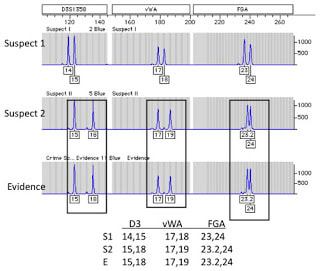 In my work as an editor, I sometimes give talks to authors telling them how social scientists feel inferior to those working in the physical sciences, because the physical scientists are so much more scientific. There is some truth to that inferiority, because most physical sciences definitely have better (at least more expensive) measuring devices than we do. There is also a myth attached to the inferiority, because most social scientists think that they can become better scientists by using various complicated econometric methods to analyze their data. As I pointed out in an earlier blog post, that is exactly wrong. Graphs can be more persuasive than models, and the physical sciences prefer simple methods. This issue of science and technology envy happens elsewhere too. In a paper published in Administrative Science Quarterly, Beth A. Bechky investigated how forensic scientists reacted when the National Academy of Sciences accused all of them – except those working in DNA profiling – of being insufficiently scientific. This is a great test case because it is consequential – forensic science is important in criminal trials – and because it is a good example of what happens when one occupation gets access to a shiny new and advanced technology, and occupations working nearby watch and react. This is a frequent event in organizations, perhaps especially in healthcare with its influx of new techniques, but also in many organizations that make increased use of data processing and communication technology to improve their work. The research showed that reactions to the damning report were strongly influenced by how compatible the new DNA technology was with the values and existing technologies of each occupation. “DNA envy” was felt in all the other forensic labs but led to action in only some. The strongest resistance was in firearms analysis, which is an occupation that values individual craft-like judgment and uses a method unrelated to the statistical analysis used in DNA profiling. The firearms examiners didn’t accept the call to become more similar to DNA analysts and saw no way of doing so anyway. The strongest acceptance was in toxicology. No wonder – toxicologists’ values centered on minimizing errors and quantifying the precision of their measurements, which closely matched the values held by DNA profiling labs (and the new technologies they used). The toxicologists’ main reaction to “DNA envy” was to point out that they had been like DNA profilers all the time but hadn’t been recognized as such. As usual, the most interesting case is the one in between. Narcotics labs have measurement devices based on technology similar to that used in DNA profiling (GC/MS, in case you wonder) but also rely strongly on a fast, accurate crystal test that has little in common with DNA analysis. While there was some technology similarity, the values of the two types of labs were in conflict because narcotics analysts strongly valued their independence and flexibility when assessing evidence, and they were proud of their speed. To them, becoming “like DNA” would mean becoming less than they already were, at least as individual contributors, and they feared that they would have to adapt in that direction. This fear was especially strong because they knew about other narcotics labs that were moving to the measurement device just to become more scientific. This research is important news for all who deal with technology. We are used to worrying about whether the right technology will be adopted and whether it will happen soon enough. Now there is another issue to keep in mind: what are the side effects of adopting new technology, and are they good or bad? Bechky, B. A. 2019. "Evaluative Spillovers from Technological Change: The Effects of “DNA Envy” on Occupational Practices in Forensic Science." Administrative Science Quarterly, Forthcoming. Comments are closed.
|
Blog's objectiveThis blog is devoted to discussions of how events in the news illustrate organizational research and can be explained by organizational theory. It is only updated when I have time to spare. Archives
May 2024
Categories |
 RSS Feed
RSS Feed